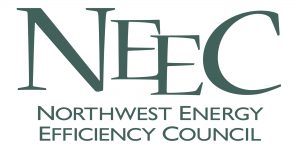Align state agencies and resources to streamline and enhance energy efficiency services across Oregon, with particular attention to reaching low-income and disadvantaged citizens. Relevant agencies include Business Oregon, Housing & Community Services, Four-year public universities and community colleges,
the Employment Department, the Public Utility Commission, and the Building Codes Division.
Unlock and deploy private capital lending by pooling agency resources and targeting tax credits; expanding on-bill financing of energy efficiency and demand management investments; considering having ODOE become a secondary market buyer of aggregated energy efficiency loans; and piloting energy efficiency power purchase agreements (EE-PPAs). The state should establish rating and reporting systems that inform home buyers, renters, and businesses about the energy performance of Oregon’s residential and commercial buildings.
Capture deeper, harder-to-reach savings by investing in long-term strategic relationships with building owners and property managers; deploying supply-side efficiency measures, such as conservation voltage reduction; and mobilizing communities, with an emphasis on rural areas and creative approaches to
consumer engagement.
Establish an Energy Efficiency Delivery Council, comprised of leadership from existing energy efficiency organizations, to endorse Oregon energy efficiency plan goals; align, consolidate, and coordinate energy service delivery statewide across myriad organizations; and focus on customer service and ease of participation.
Explore rate design changes, coupled with smart grid and smart meter investments, that will send appropriate price signals to consumers by considering the adoption of voluntary rate designs which would educate consumers about the true costs of energy service. This will encourage them to take appropriate steps to manage their energy usage. Taking full advantage of technology to engage consumers as proactive partners, rather than taking them for granted as passive passengers, can unlock
previously unavailable energy efficiency savings and create new business opportunities.
